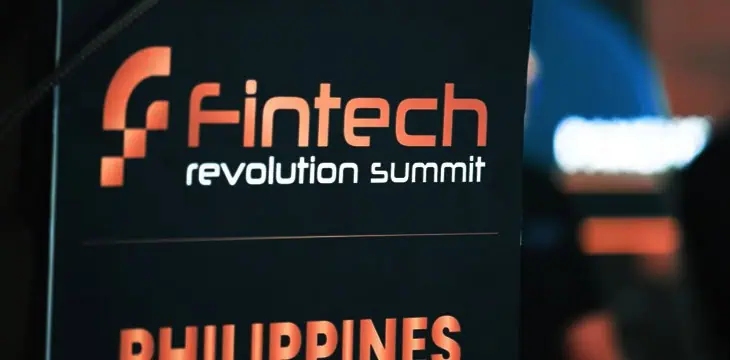|
Getting your Trinity Audio player ready...
|
Bitcoin’s global, transparent public ledger “could be as ubiquitous as the internet” and is something “which has never been seen before in history,” according to Jerry Chan, CEO of TAAL Distributed Information Technologies Inc. Speaking at the online Asia Blockchain Summit 2020, Chan said Bitcoin could solve more of the world’s problems if people focus on creating new use cases for it, rather than focusing on the protocol.
Chan was speaking to Noelle Acheson, director of research at CoinDesk, in a “fireside chat” at the summit, which took place online from July 15-19. The session title was “How Blockchain Can Rebuild the Economy after COVID-19,” but with Chan as the only guest, he had the floor to speak generally about how Bitcoin’s open ledger and scalability makes it almost limitless in potential. Whether rebuilding a damaged economy or simply building a better one, Bitcoin provides the infrastructure to do it.
He compared the Bitcoin protocol to that of the internet itself, pointing out that the specifications for sending and receiving information online are actually pretty simple—with rules that aren’t constantly changing. No company today focuses on building, rebuilding, or trying to improve the basic internet protocol, he said. It’s far more important to build real businesses on it instead.
Chan detailed how his professional experience as a Wall Street technologist for over 11 years helped him understand what Bitcoin could actually achieve at scale. Though initially skeptical in 2011 thanks to reading about previous attempts to create online currencies, he came to appreciate the technology after becoming involved with Colored Coins, an early Bitcoin tokenization concept.
The “scaling debate” that took place from the early days and eventually led to the hard fork split of 2017 had a dramatic impact on Bitcoin’s growth and adoption. “All interesting projects ground to a halt, and Bitcoin collapsed into itself,” Chan said. As a technical professional, he thought it was strange when others in the field started talking not about what Bitcoin could do, but what it couldn’t.
“That’s not possible, I didn’t believe that,” Chan added.
What people get wrong about blockchain
“What are people getting wrong about digital assets?” Acheson asked. Chan said the problem was that people think the technology only works for one thing. Bitcoin was designed to be a general layer, a base and unchanging protocol like the internet, and what people build on top of that is up to them.
Another problem was people misunderstanding how Bitcoin stays secure. It’s not done on the technology side, eg: encryption, signatures and math—security on the Bitcoin network is protected instead by economic incentives, which people often don’t examine.
The blockchain need to be public and transparent, not private, he said. “You’ll have more honest players that way … and macro effects will prevent monopolies from happening.” That’s the real way to avoid power centralizing; no one government will try to take over the network because none can. Governments compete with each other, after all.
TAAL promotes itself as supporting businesses and use cases that utilize the public blockchain, Chan added. The company’s business model works only if there are a billion transactions a day, or much more—but this role as a professional transaction processor was still more viable than the old-fashioned “mining” model still used on BTC, where every miner aims to grab as many coins as possible to restrict the supply, then hope the price goes up somehow.
“For anyone with a background in finance, that’s not viable.” It’s a model based on market manipulation and doesn’t bother to seek new use cases for the asset or blockchain, other than speculation.
Bitcoin can help the post-COVID world… and everything else too
As for the question of what blockchain can do to rebuild the post-COVID-19 economy, Chan noted that some of TAAL’s clients are pharmaceutical companies. Giving the example of EHR Data, he said their initial idea of tracking opioid prescriptions in the United States as a means to combat the opioid crisis (which remains the project’s primary focus) could be expanded to track any aspect of healthcare.
Managing the current pandemic and its effects is “actually a perfect use case for blockchain, because you don’t know who the trusted parties are,” Chan said. You have governments, hospitals, health officials, etc. all producing information but without a database everyone could agree on.
Bitcoin promotes the use of primitive (encrypted) data on a public blockchain, which could be used to track information like tests, results, labs, tampering, coroners’ reports and autopsies.
“If we’d had transparent information on this, we’d have had a significant advantage back in February 2020. Because (Bitcoin) has no administrator, that makes it more trustworthy.”
That said, Bitcoin is capable of solving any problem involving massive amounts of data. Healthcare is just one of them, and in reality Bitcoin is just the infrastructure on which any solution or business can be built. Once the focus shifts away from debates over protocols and technology, and instead towards building new businesses, then Bitcoin’s potential can be realized.

 07-18-2025
07-18-2025 





